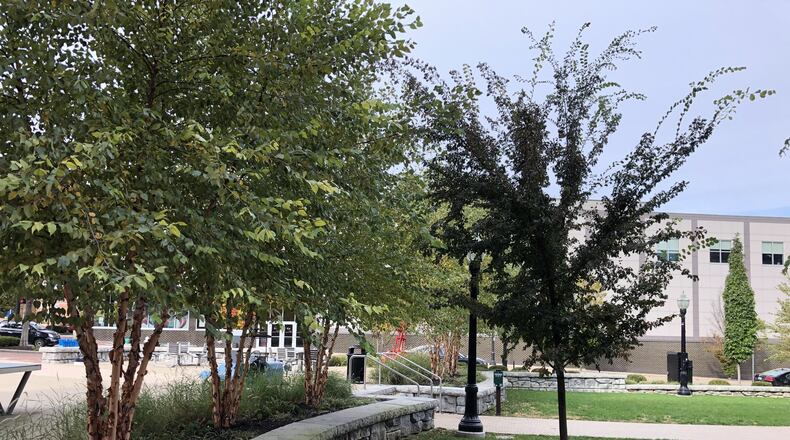He has planted greater numbers of trees that aren’t already in the city so if diseases or insects wipe out large numbers trees — as they have in recent decades with elms and ash — the destruction won’t be as significant.
Lorena Lyons, who has lived along Neal Boulevard five decades, has benefited from trees the city planted during 2016 in the street’s grassy median, which are only now starting to mature and become a significant presence in the neighborhood.
Trees were in the median years ago, “but they didn’t live,” Lyons said. “They’ve got these going pretty well.”
One of the first things Bienemann and his interns did was catalog every Hamilton tree in a public place, including those that line streets, that are in parks and golf courses, and in other city-owned places. They recorded the kind of tree, along with its condition.
“When I got here (in 2016), there was 2,000 dead standing trees,” in public places in the city, he said. Now, “we’re down to 365 trees.”
“We’ve slowly been picking away at the dead trees, just trying to get them down, because obviously, they’re dead and they’re an issue,” he added. In 2017, some 150 “priority trees” — those that could pose highest risks to people — and probably 75 were planted to replace them, where planting a new tree was appropriate.
He also advises homeowners what kinds of trees they should plant, when they ask. In the past, property owners have planted tall-growing trees beneath power lines, only to be disappointed when parts of the trees had to be cut so they didn’t grow into the electric wires.
“When I got here, we were probably at 130 species,” Bienemann said. “I see right here we’re up to 198, so we’ve really added to what’s out there. We’re planting less maples, of course, and crab apples, and obviously, no pear trees.”
He welcomes the opportunity to mark the best locations for trees that line the streets, and suggest several kinds that are most suitable. The city also can help property owners get significant discounts on trees that are between curbs and sidewalks when they call him.
Bienemann enjoys advising people about what kinds of trees or bushes they should plant instead, the kinds that don’t grow tall enough to cause problems with the wires. He also gives free advice to Hamilton property owners about how to deal with insect or disease problems on their plants, even on private parts of their property.
“I’ve done 542 of those,” answering calls so far this year from people about trees anywhere on their land. He estimates he has saved those people $43,360 from what they would have paid for-profit professionals for similar services.
He can recommend very inexpensive ways to drive away some bugs.
Tree planting has blossomed in recent years. Between 2004 and 2014, Hamilton planted between 54 and 168 trees per year. Since 2016, the lowest number of trees planted was 475.
The tree plantings have focused on parts of Hamilton east of the Great Miami River. That’s because that’s where the trees were least plentiful.
“This spring, we put out 150 trees, and this fall, we’re putting out 150,” he said.
Those are trees that are about 8 feet tall. Another 100 seedlings were given out to people at St. Joseph Consolidated School in April. Another 130 native trees were planted at the Riverside Natural Area along the Great Miami River in the Lindenwald neighborhood. Those included 55 American chestnuts, about 65 butternuts, and the rest being mixed hardwoods, such as oaks, maples and sycamore trees.
Hamilton is working with Fairfield and Norwood to distribute 240 trees purchased with money from the Duke Energy Foundation, which has been distributing trees that are about 4 to 6 feet tall to impoverished areas where trees are lacking, to help low-income property owners reduce their energy costs by planting trees, which create shade in summer and stop winds in winter.
The trees will be given away at Joyce Park to Fairfield and Hamilton residents, probably in April. The program’s details are still being put together.
About the Author
